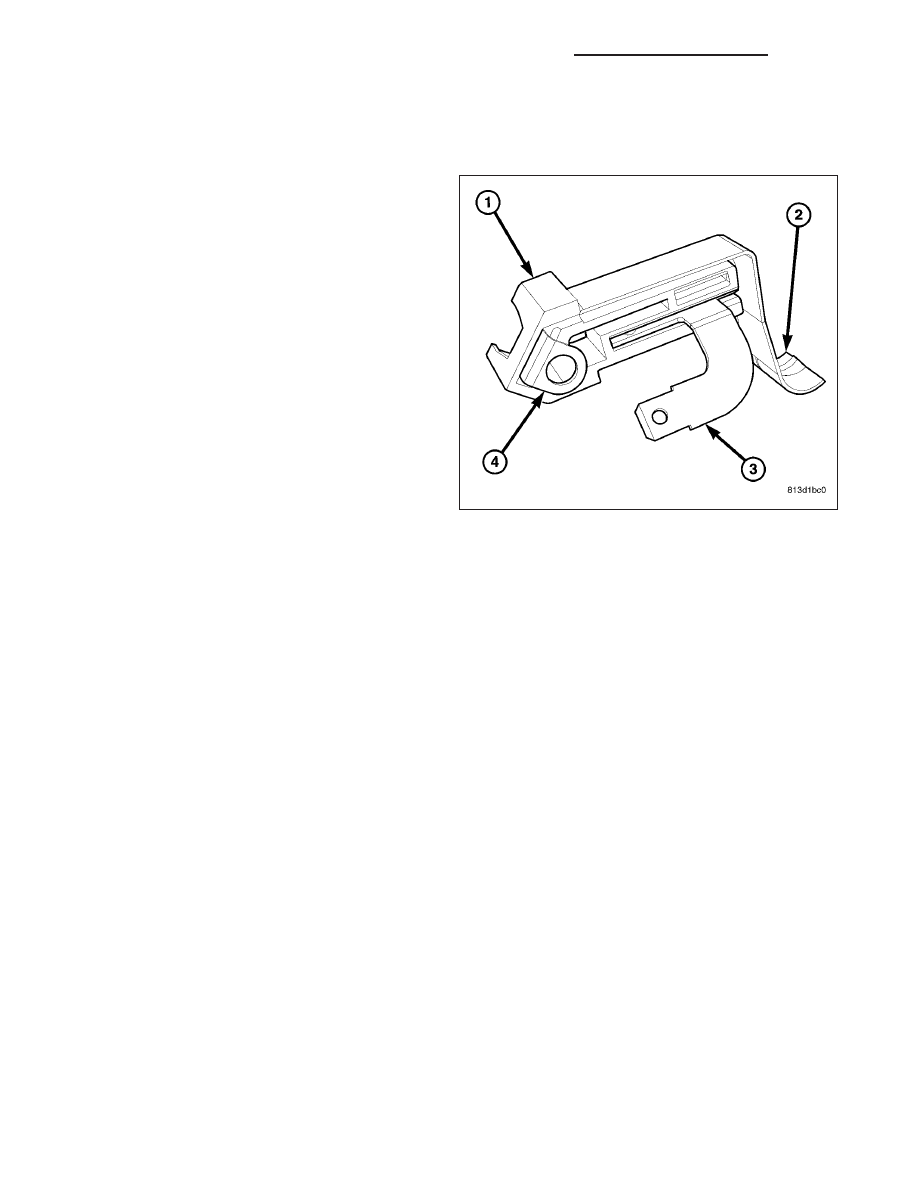Dodge Ram Truck 1500-2500-3500. Manual - part 438

PARK BRAKE SWITCH
DESCRIPTION
The park brake switch (1) is located on the park brake
lever mechanism on the cowl side inner panel below
the instrument panel, to the left of the steering col-
umn. This switch includes a spade-type output termi-
nal (3) that connects the switch to the vehicle
electrical system through a dedicated take out and
connector of the body wire harness. The output termi-
nal is integral to the stationary contact within a molded
plastic insulator.
A locating tab on the insulator engages a slot in the park brake lever mechanism for positive switch location. Exter-
nal to the insulator is a movable leaf contact with an integral grounding lug (4) on one end and an integral actuating
lever and follower (2) on the opposite end. The switch is secured to and grounded by a single screw to the park
brake lever mechanism. The park brake switch cannot be adjusted or repaired and, if faulty or damaged, it must be
replaced.
OPERATION
The park brake switch is a normally closed, mechanically actuated leaf contact switch that is operated by the park
brake lever mechanism. The switch is grounded through its mounting to the park brake lever mechanism and pro-
vides a ground input to the ElectroMechanical Instrument Cluster (EMIC) (also sometimes referred to as the Cab
Control Node/CCN) on a park brake switch sense circuit whenever the park brake is applied, and opens this circuit
whenever the park brake is released. The park brake switch sense input to the EMIC is used for control of the brake
indicator and may also be used as a logic input for other electronic features in the vehicle.
The park brake switch can be diagnosed using conventional diagnostic tools and methods. However, proper testing
of the EMIC processing of the park brake switch sense input requires the use of a diagnostic scan tool. Refer to the
appropriate diagnostic information.
DIAGNOSIS AND TESTING
PARK BRAKE SWITCH
WARNING: To avoid personal injury or death, on vehicles equipped with airbags, disable the supplemental
restraint system before attempting any steering wheel, steering column, airbag, seat belt tensioner, impact
sensor, or instrument panel component diagnosis or service. Disconnect and isolate the battery negative
(ground) cable, then wait two minutes for the system capacitor to discharge before performing further diag-
nosis or service. This is the only sure way to disable the supplemental restraint system. Failure to take the
proper precautions could result in accidental airbag deployment.
8L - 158
LAMPS/LIGHTING - EXTERIOR - SERVICE INFORMATION
DR/DH